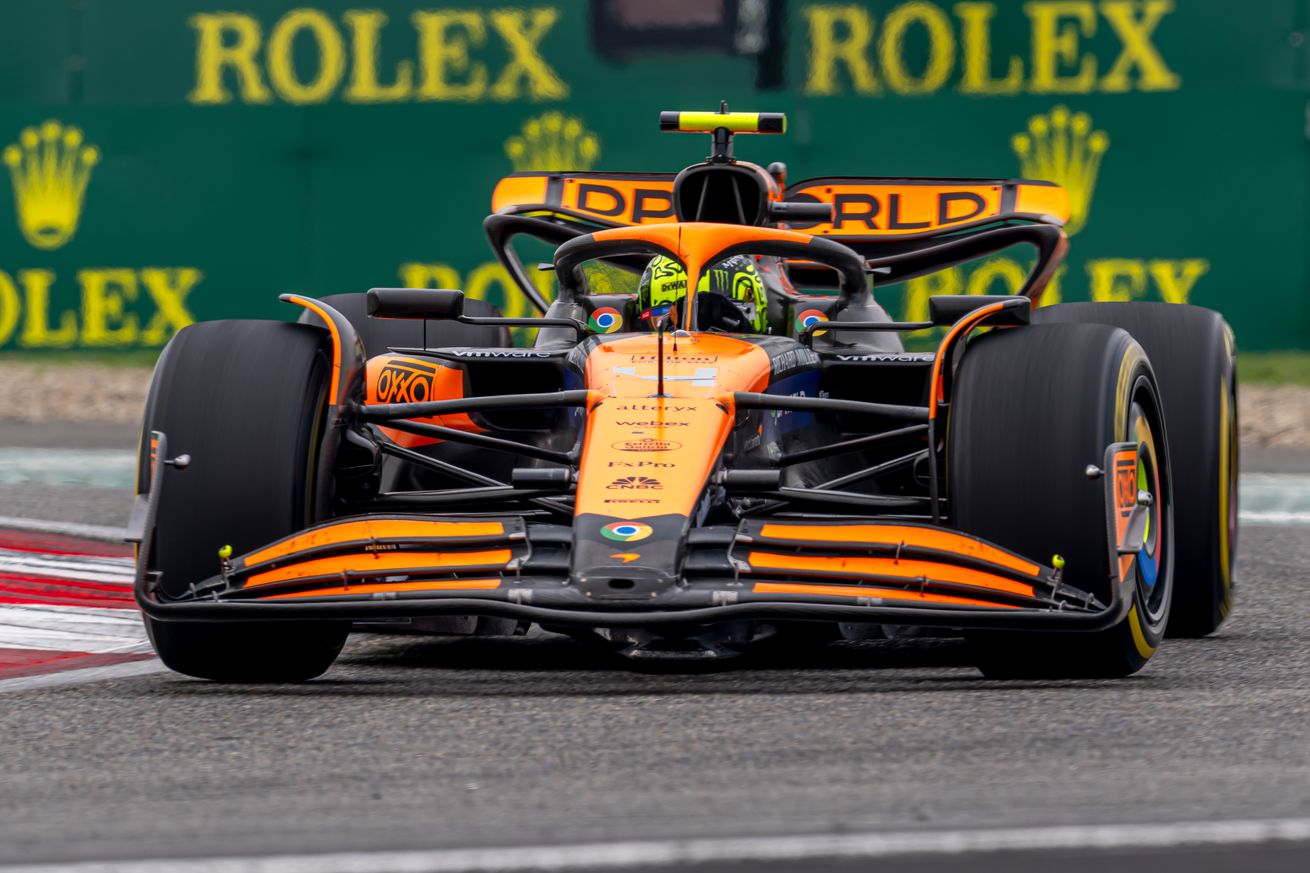Photo by Michael Potts/BSR Agency/Getty Images
Some new rules are coming to F1 for the Miami Grand Prix
Formula 1 is headed back to Miami.
But things will look a little different than the last time the grid was down in South Beach.
Ahead of this weekend’s Miami Grand Prix, F1’s governing body released an update to the Sporting Regulations, which includes two critical changes that fans should be aware of. The first involves false starts, stemming from an incident at the start of this season’s Saudi Arabian Grand Prix, while the second change to the Sporting Regulations involves the use of wet tire compounds during practice.
The first change alters how race officials determine whether a driver jumps the start. At this year’s Saudi Arabian Grand Prix, Lando Norris did move prior to the official start, with some of his rivals noting that the McLaren driver may have jumped the start:
However, after opening an investigation into the alleged false start, race officials determined that Norris had not violated Article 48.1 of F1’s Sporting Regulations, which governs incorrect starting locations.
The reason? It had nothing to do with what our eyes told us, but rather with how Article 48.1 of the Sporting Regulations was previously written. The previous Article 48.1(a) of the Sporting Regulations noted that a driver will be penalized if they “[m]oved before the start signal is given, such judgement being made by an FIA approved and supplied transponder fitted to each car…”
According to the stewards, who issued a full report following the race, Norris was not in violation because the transponders did not signal a false start. “The Stewards reviewed positioning/marshalling system data, video and determined that the video appeared to show that Car 4 moved before the start signal was given. However, the FIA approved and supplied transponder fitted on the car did not indicate a jump start.”
As the officials noted in their report, the rules require a finding from the transponder to impose such a penalty.
“Article 48.1 a) of the Formula One Sporting Regulations states clearly that the judgment of whether or not there was a jump start is to be made in accordance with the transponder, which did not show a jump start. In the circumstances, we took no further action.” (Emphasis added).
The revised version of the Sporting Regulations, issued on Tuesday, removes the language regarding a transponder. Now the section indicates that a penalty will be imposed “ … on any driver who is judged to have: Moved after the four (4) second light is illuminated an before the start signal is given by extinguishing all red lights, as defined in Article 44.10.”
The “ … such judgment being made by a FIA approved and supplied transponder fitted to each car” language has now been removed. For those wondering, the “four second light” is the second pair of red lights illuminated prior to the start of each race.
The other rule change is aimed at getting teams to participate in wet practice sessions, rather than sit out the sessions to preserve their limited allocation of intermediate tires. At the Japanese Grand Prix this season, many teams sat out the rainy practice sessions, hoping to keep those compounds for the race should rain be a factor.
A new clause has been inserted, Article 30.5 (g), to discourage teams from holding onto wet weather tires. “From the five sets of intermediate tyres allocated to each driver under Article 30.2 (a) ii, if [first, second or third practice) is declared wet, one set of intermediate tyres must be electronically returned no later than two hours after the end of [third practice],” states the new clause.















